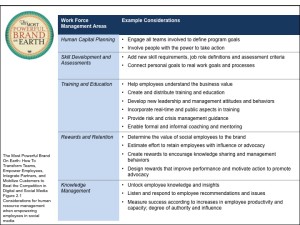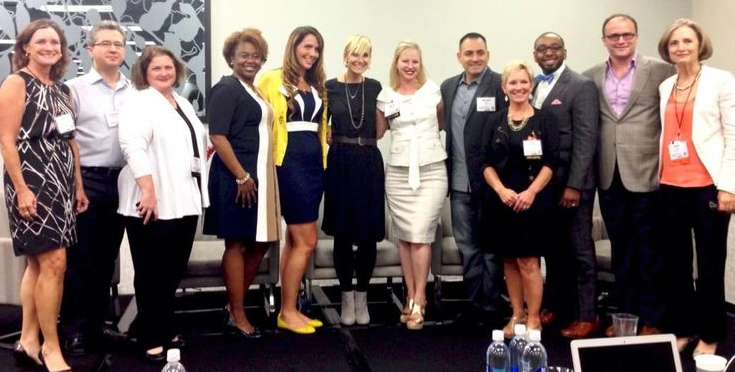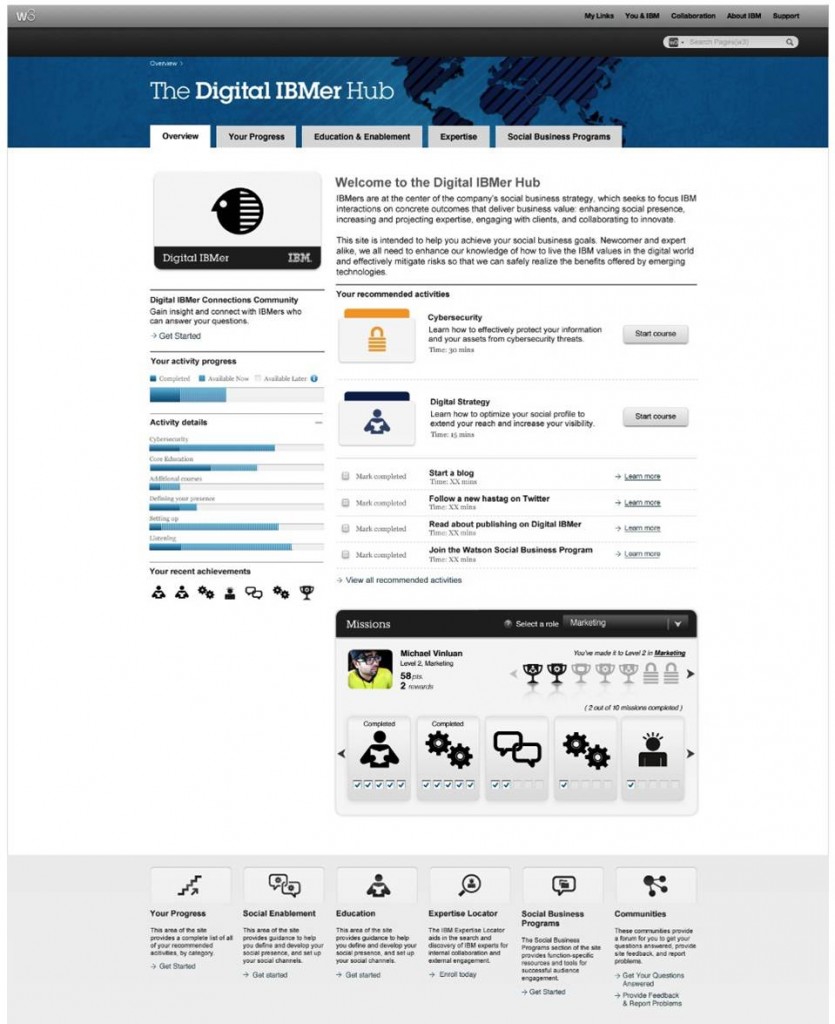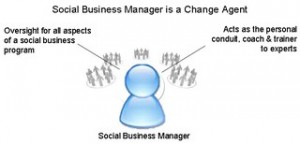Working for a Global Brand can bring questions and challenges for employees when it comes to whether or not they should establish a branded blog in their respective region or country. I recently worked on this guidance and thought it would be helpful to share with other B2B marketers who are working to establish branded blog guidance for their employees.
Online collaboration platforms — such as blogs — are fundamentally changing the way people work and engage with one another, clients, partners and prospects. By blogging, your ideas and expertise can be shared enabling dialogue with clients, shareholders, and individuals in the country in which you market. Blogs can be an important part of your country’s overall communication strategy, however as you consider getting started, it is critical that you begin with an understanding of the worldwide strategy for your program, brand or service, and determine how to support that strategy before establishing your own country or regional branded blog.
Whether you integrate with an existing branded blog or create your own because one does not already exist, remember that you represent your company and must uphold the standards of quality pertaining to content, creation and curation, relationship management, real-time listening and engagement. Individuals are responsible for the content they publish online, whether in a blog, on a social network, or any other forms of user-generated media, so it is imperative that you provide social computing guidelines for employees to follow. As an example, here’s a link to IBM’s IBM social computing guidelines. Also, be sure to provide employees guidance to follow on any branding, naming and messaging guidelines that have been established.
Avoid Redundancy
A key aspect of a successful brand strategy is to provide value to social outreach and relationship building. Think about how you can centralize efforts to increase reach and impact rather than running the risk of duplication and redundancy which could be the result of working independently. Begin by taking an inventory of what already exists and work to collaborate as a contributing guest blogger as opposed to creating a new blog. Group blogs are encouraged and often overlooked as a strategic option.
Make A Plan
Establish the editorial calendar, messaging and subject matter experts to contribute content that will ensure the blog will provide value to the target audience, be a long-term, sustainable presence that fosters two-way dialogue.
Should I set up a blog?
Before getting started consider the following: Does a branded blog already exist that offers the same type of content and reaching the same constituents as you would like to? If so, then you should work with the blog author to contribute as a guest rather than establishing a separate and potentially redundant branded blog.
What are your objectives?
If no branded blog exists, you should clearly define the objectives for your blog before you establish one. Consider what role you expect the branded blog to play. The more specific your goals — defined over a timeframe — the easier it will be to focus your efforts.
Who is your audience?
As you begin planning a branded blog, it’s important to do so with a focus on customer relevance.
- Whom are you trying to reach?
- What knowledge are they seeking?
- What problems or issues are they challenged with?
- Are they consuming social media — and if so, what are their venue preferences?
Looking at a combination of these factors will help you ascertain the value of your blog and will help you evaluate if there is a place for a branded blog within your overall strategy.
Next, you should identify the needs of your target audience.
- What are their goals and objectives?
- What other blogs are they reading and why?
- How will your blog be different from other industry-leading blogs?
- What topics do they find of interest?
- What are their pain points?
- How will your branded blog provide them solutions?
Do you have the necessary resources to effectively manage a blog?
Before establishing a branded blog, you should be committed to maintaining a long-term, ongoing presence. This is not broadcasting, but relationship building. For this reason you should write in the first person — you are communicating to other readers in a one-on-one fashion and creating a relationship. You’re not simply delivering news, you’re delivering information and content through the lens of your experience and expertise. You’re delivering it in such a manner that others will find it useful or helpful. You’re adding value to the industry news by applying your observations or your perspective.
- Are you committed to engaging in a conversation?
- Will it be supported by you alone or by a team of owners?
- Are your authors skilled in first-person blog-writing style?
You should plan enough time to author new posts regularly, listen to your followers and respond in a timely fashion to comments they share on your blog, and expand your network. You will want to post at least two times a week, with an ideal post length of around 500 words.
- Are you able to effectively manage and maintain valuable content and grow and nurture relationships? Keep in mind that readers will post at all times of the day and night — and may expect responses within a business day.
Will you have a person dedicated to responding to your audience, or will you do it “in your spare time”? Be realistic about the amount of time you can spend on this work.
What criteria will determine the success of the blog?
Key performance indicators (KPIs) can be used to gauge the success of your branded blog. The challenge is knowing which measures are meaningful. Some important criteria to track would be Reach, Engagement and Advocacy. A monthly review of your success metrics and your goals will help you keep track of your progress.
Understanding policies:
- Ensure that your branded blog complies with your companies Social Computing Guidelines. This includes all entries within your blog, whether you author them or not.
- Remove any community-generated content that violates your companies policy and if, necessary, report any violations.
- Follow any processes established for starting blogs, reporting defects, requesting technical support or submitting requirements.
- Respect copyright, fair use and financial disclosure laws.
- Follow messaging and naming guidance.
- Protect all confidential and proprietary information.
- Don’t cite or reference clients, partners or suppliers without their approval.
- Know the rules for engagement: what is appropriate to share and what is not.
- Identify yourself. Names of the administrators must be publicly listed in the “about” section.
Maintaining your blog
Successful blogs have an editorial plan with a publishing cadence and are relevant to a topic that the target audience finds interesting and of value. Blog owners should establish an editorial calendar to help plan at least two to three posts a week. Offer content that aligns with the interests of your target constituency, is thought-provoking and timely. Here are a few examples:
- Thought-leadership pointsofview (POVs) around industry hot topics or products.
- Commentary on industry trends and forecasts.
- POVs on other blog posts.
- Responses to common questions.
- Review of industry-related news from reputable third-party resources.
- Information such as company press releases for new products.
- Identification of current events and how products and/or a virtualized environment could have played a role in preventing, improving or evolving the situation. These types of posts are dependent on outside circumstances but allow readers to apply the benefits of technology to issues and situations that resonate with them.
- Pre- and post-events coverage: Before and after events, write posts detailing your attendance/participation and link to other industry influencers who are either planning on attending or did attend. Following the event, write a recap and link to any Influencers you may have met or listened to while in attendance. For example: A post could revolve around “Five Things I Learned at Event XYZ.”
Promoting your blog
Once you have set up a branded blog, you should consider how you will promote it and attract a following. To ensure that your content has the highest potential to be viewed by new audiences, there are a number of tactics that can be utilized. Here are some starting suggestions:
- Build a strong blogroll— a blogroll is a list of blogs that you might recommend or link to on your blog in a sidebar list. Your blogroll should contain influencers and peers.
- Comment on — and link to — influencer blogs and blogs in your blogroll frequently. The best way to generate awareness around yourself (or the team) as a thought-leader and the content you post to your blog is to actively participate in conversations and comment on other bloggers posts of interest. By exposing yourself to industry influencers, you have the ability to initiate a discussion and share your point of view by leaving a comment and linking back to your blog.
- Use the same keywords you use in your blog posts when writing your comments, as this information is searchable and can increase search results.
- Be sure to include your name and a link to your blog in open fields or at the close of your comment.
- Link to interesting/valuable content posted on relevant blogs
- Share links to posts on other social media properties for example: LinkedIn Status Updates, Twitter, etc.
- Ask your readers for feedback or future topics they’d like covered or where you can provide additional details and information; pose questions to audience or bloggers as part of your post.
- Reach out to fellow bloggers for guest post opportunities on your blog and on theirs
- Approach other bloggers or team members, who don’t necessarily have their own blogs but would like to contribute, and encourage them to build their social eminence by authoring a guest article for your blog. Also, consider co-authoring posts.
- Include a link to your blog in all social profiles and in your email signature(s).
- Enhance search results by using consistent keywords in the metadata (tags/categories) that resonate with your target audience – be sure to use their language. Consistency of key terms will be indexed by search engines — impacting organic search results.










